What are the best VR games? We have tested several of them across the major headsets, ranging from the good, the bad, and the downright nausea-inducing – and we will endeavour to seek out new, strange, and challenging content for this burgeoning platform. In the name of science… or something.
While there are a lot of experiences out there, we’re going to be more choosy, handpicking the best ones to play with the best VR headsets. After all, we only have room for the best VR games, and there’ve been some absolutely fantastic ones in the past year alone.
The best VR games are:
Half-Life: Alyx
A new Half-Life game has landed in our virtual laps, and though it’s not Half-Life 3, it fits into the series chronologically between Half-Life 1 and 2. You play as Alyx Vance, fighting against the Combine alongside her father, Eli. Though fans questioned the decision to develop the game for VR exclusively, with Half-Life: Alyx, Valve have undoubtedly taken a pioneering leap, crafting a game that showcases what VR can do for the gaming experience without compromising what makes the Half-Life series so great.
In his Half-Life: Alyx review, Dustin describes how Alyx “deliver[s] on two sets of overwhelming expectations”, with a “vibe that sits somewhere between the intimate exploration of Gone Home and the frightening resource management of Resident Evil”. He praises the satisfaction of rummaging around, nudging doors and catching grenades – and the last few levels, he says, are “immensely creative as both a culmination of the game’s mechanics and a wildly varied presentation of new stuff”.
Whether you’re a stalwart fan of the Half-Life series, or don’t know your crowbars from your (head)crabs, it’s safe to say Half-Life: Alyx is a must-play for VR gamers eager to experience the latest innovations of the genre.
Walking Dead: Saints & Sinners
Walking Dead: Saints & Sinners does a better job than almost all zombie games of making you feel like you’re keeping the undead horde at arm’s length. And it does this by literally letting you hold a zombie off with one arm while you break a bottle on their head, flip it, and then jam the jagged end through their squishy skull.
The combat is truly grim, with weapons getting stuck in Walkers, requiring you to yank, jerk, and jimmy them out of or through your enemies. There’s a loose narrative built around helping out the various actions of post-apocalyptic New Orleans, which keeps you stepping out into the undead-infested city streets for new supplies. But the grizzly melee combat is the real draw here, letting you create your own melee finishers, and leading to plenty of ad hoc brutishness.
L.A. Noire: The VR Case Files
When virtual reality first became a, well, reality, plenty of games came to mind that deserve all these delicious new dimensions. The breathtaking speed of a racer, maybe. The scale and spectacle of an open-world RPG, perhaps. L.A. Noire, a 2011 neo-noir detective action-RPG, however, might not have been the game you might have expected to strap to your noggin.
That said, L.A. Noire was technically advanced for its time: its pioneering facial capture helping you select the baddies from those just caught in the wrong place at the wrong time. Where the chin-stroking deductive side of L.A. Noire won Team Bondi plaudits, its combat failed to match up. Enter L.A. Noire: The VR Case Files, a truncated version of the police game that doesn’t just improve the relatively weak gunplay and driving aspects, but it is one of the best VR games on PC.
Rather than twiddling and tapping away at your keyboard and mouse, you lean, shoot goons, and reload your classic Remington physically with the HTC Vive controllers – and it feels invigorating. Doggedly plugging away at each case just feels better in virtual reality. The heat of battle is much more intense – especially when you punch yourself in the face. No, that totally wasn’t us.
Among Us VR
You may already be familiar with games like Among Us, a viral social deduction phenomenon which rose in popularity during the pandemic that has since seen an enormous player dropoff now that everyone is allowed outside. This is essentially the same game, except the key difference is that you have to wear a VR headset. Changing into a first-person perspective is tense enough, but imagine hearing an impostor vent as you’re busy trying to get the timing right on that puzzle in engineering.
Thumper
For developer Drool, creating a rhythm game just wasn’t enough: Thumper would be a rhythm violence game. We were intrigued when it was announced, and now we are captivated by its immersive embrace.
Piloting a metallic beetle-thing with a ravenous taste for blistering speed, this indie game has you zooming through trippy, psychedelic surroundings. Neon pathway resembles Amplitude and Guitar Hero, the notes replaced with walls to skid on and obstacles to scale. Each level introduces a new gameplay wrinkle, with your efforts culminating in a showdown with the giant animated skull, CRAKHEAD. Hey, at PCGN, we don’t judge. Thumper is astonishing in VR, its physicality and speed creating an intoxicating mix with its original, pumping soundtrack. As far as music games go, this, far and away, is one of the best VR games on PC. Drool says, “To reach synesthetic bliss, you must face rhythm hell.” To say VR takes things up a notch would be a severe understatement.
Superhot VR
Superhot shot to indie fame on the back of a simple but ingenious premise: time only moves when you do. Feeling overwhelmed? Stay motionless, and the ravages of time are frozen for as long as you need to catch your breath. A barrage of bullets might be ready to tear into you, but you can see them coming and plan your escape.
Essentially it is gaming’s answer to the Matrix. Wannabe Neos rejoice, then: Superhot VR takes that effortless cool you felt in the original game and takes it to a new level. Dodging bullets and attacks physically rather than with a keyboard or analog stick really increases the immersion, reinventing a simple mechanic into one of the best VR games around.
Keep Talking And Nobody Explodes
Unlike many of the best VR games out there, Keep Talking And Nobody Explodes is a chaotic co-op game: one player is the bomb defuser, able to view and interact with an explosive device via a VR headset. Meanwhile, the other players are defusal ‘experts’ with a physical manual (printed out or available as a webpage) to hand, which they must use to advise the defuser.
VR is the perfect platform for this concept. Successfully defusing a bomb within the time limit, navigating the many modules filled with coloured wires, logic puzzles, and Simon Says games is extremely satisfying when playing with friends. If you can stifle the urge to high-five your defusal buddy after a successful round, you are incapable of joy.
I Expect You To Die 2
Ever fancied yourself as a suave secret agent? I Expect You To Die is a VR puzzle game where you’re put in perilous situations. Perhaps the car you’re inside is booby-trapped. Maybe the submarine’s sprung a leak. If you’re lucky, you may even get an all-expenses-paid trip across India on a luxury train. If you’re unlucky, a tank might appear outside your window and fire shots into your cabin.
The sequel, I Expect You To Die 2, provides even more elaborate scenarios to puzzle your way out of, improving on the original with even more immersive and hilarious missions. Though it may take you several attempts to escape the danger you find yourself in, you’ll feel like 007 when you do.
Star Trek: Bridge Crew
We are forever told the Kobayashi Maru is unwinnable. But, of course, just like Captain James T. Kirk, we know we have the skills to win and become the best space pilot the Federation has ever seen. Star Trek: Bridge Crew lets us live out these dreams in glorious virtual reality.
First, grab up to three friends, who, alongside you, assume the role of officers of the Federation, determining the fate of your ship and crew with every fateful decision – it’s a game that thrives in a crisis. You and your intrepid space-bound band will boldly go to the largely unknown sector called The Trench to assess its potential as a new Vulcan homeworld.
Yet, we could have simply been running modest intergalactic errands, for all we care. Star Trek: Bridge Crew is a game built from the ground up for VR. Your cockpit environment is unsettlingly accurate, and it feels great to just exist in this world, interacting with the ship’s controls, and making decisions like real space pilots. This, one of the best VR games you can find, is a game everyone, not just Trekkies, should experience.
Elite Dangerous
If you only ever play one game in VR, make it Elite Dangerous: it is simply one of the best VR games you can strap to your skull. Its scale is difficult to comprehend, offering a 1:1 replica Milky Way galaxy. A galaxy unblemished by load times, and populated by human players with their own allegiances, agendas, and minute-to-minute missions. If you need a head start, check out our Elite Dangerous guide.
However varied or complex the action gets, your position is always at a fixed point, and that helps to stamp out any potential for motion sickness. You can roll, pitch, and flail about haplessly (the latter happening frequently, we find) during extended play sessions at the mercy of Frontier’s Newtonian flight model without the queasiness setting in.
That is absolutely crucial to maintaining Elite Dangerous’s appeal as a long-form game. The Cambridge studio has been among the most forward-thinking when it comes to VR support, and it tells with every second you spent in the cockpit.
Assetto Corsa
Not only is Assetto Corsa an exquisite racing game, but it is also one of the best VR games on PC, thanks to the rock-solid underpinning physics model, comely visuals, and fan-requested features. The latter means, naturally, that it is possible to play Assetto Corsa in VR. It supports the Oculus Rift natively, so is no need to stalk the darker corners of the internet in search of a mod or middleware program.
Conceptually, racing a sports car is one of the few time-honoured videogame staples crying out for VR adaptation. Third-person shooters need a serious rethink in order to function as VR games, but the likes of Assetto Corsa thrive with a fixed camera point and the ability to look into mirrors, at apexes, or towards opponents. It’s also made with lasers, apparently.
No Limits 2
If you want to take the idea of being in another place to the extreme, No Limits 2 is for you. Creator Ole Lange’s roller coaster simulation game is a testament to the psychosomatic powers only the best VR games can provide; your legs feel weak as you hurtle down impossibly steep drops as if they are subject to physical forces. The same goes for your poor stomach as you make your way through corkscrews – as far as your body’s concerned, you are on that coaster.
And, yet, No Limits 2 is not the jamboree of stomach-emptying motion sickness that it might have been. The fixed point camera helps, and it is clear that developing the game specifically for VR minimised the potential for vomiting. A remarkable feat, given the subject matter. With a reasonably advanced designing tool and more types of coasters than you ever knew existed, No Limits 2 is the only game you need to visit if you want the simulated theme park experience.
Beat Saber
Beat Saber is basically a Star Wars game with a liberal dose of Guitar Hero. It’s a rhythm VR game where you dual-wield lightsabers to slash oncoming glowing cubes that fly towards you in time with its slick music. Each cube also has a directional arrow symbol indicating which direction it needs to be cut, adding that extra level of challenge.
The colour and light in Beat Saber give the game its futuristic feel. Each hit gives off satisfying sparks on impact, and your colourful targets glow gloriously in the surrounding darkness. Each cube perfectly matches the beat, so you’ll want to pair your VR gear with a great pair of headphones to experience Beat Saber’s pounding electronic soundtrack properly.
Gorn
When the creators of Genital Jousting and Broforce make a VR title, you can probably assume that it will be an exceptionally silly fighting game. Gorn is a violent first-person combat game where you play a muscled warrior, whose only aim is to beat the eyes out of other muscly warriors. Yep. The eyes.
You can grab weapons, parry attacks, and hold an enemy still while you pummel them into a crimson pulp. The controls are easy enough to figure out intuitively, but Gorn’s movement mechanics will take some getting used to. Instead of teleporting or using the control stick to move around, you swing your arms as if you are actually walking. What this results in is bloody combat with bar brawl levels of clumsiness as you and your enemies stagger from side-to-side desperately trying to land punches. Gorn is pure dumb fun and is well worth stumbling into.
Moss: Book II
This single-player adventure game has you directly affect the world to help Quill stop the ruthless rule of the Arcane. As a benevolent avatar, you’ll need to work with the largely autonomous Quill to fight against monsters, solve puzzles, and explore strange new places. If you’ve not played the original Moss, we recommend that you do that before this one, as it takes place directly after the first game’s events. Both games are utterly charming fairy tales full of charm and whimsy, making a perfect case for how VR works well with a third-person platformer.
Lone Echo
One of VR’s greatest strengths is that it can put you in otherworldly scenarios and still make them feel real. Case in point, we’ve never experienced space travel, but if the traversal mechanics in Lone Echo are anything to go by, then we’re missing out on some serious fun. You can push off surfaces to bounce around the environments or use little boosters on your wrist to jet across open areas.
Of course, it isn’t just about the movement. Lone Echo is a narrative adventure that has you playing as Jack, a service android aboard a mining station above Saturn. You work together with the sole remaining human, Olivia to keep things functioning. Naturally, things go awry, leaving us in charge of mending myriad mechanical faults in a convincingly weightless VR space game. Lone Echo is a good story wrapped in a great control system, and it wouldn’t be possible on anything other than VR.
In Death
Gaming and masochism go hand in hand – just look at games like Dark Souls – few genres display this more prominently than the roguelike. In Death is a VR roguelike that has the sole aim of killing you every time you play it.
You control an archer making your way through armies of adversaries armed only with a bow and a shield. The maps and enemies you’ll face are procedurally-generated, ensuring each run feels like a bespoke experience, and stepping into a fresh level with each new life is particularly impressive in VR. In Death is crushingly difficult and can get pretty frustrating at times, so don’t expect to waltz through this without putting some serious practice in. Thankfully, firing the bow feels so good that the moment-to-moment gameplay keeps you going after countless deaths.
Bonelab
Bonelab is the sequel to Boneworks, a highly experimental VR game that uses physics and action sequences to let players enjoy an experience like no other. You’ll fire guns at enemies, ride minecarts or go-karts, swing across ropes, and fling enemies using your special powers. As you complete each trial, you uncover more of the mystery behind MythOS city and the exact purpose of this underground lab’s tests.
Budget Cuts
Those who fancy a bit more sneaking with their first-person shooter action might want to strap themselves into their headsets for Budget Cuts. The idea is that you are the sole human employee attempting to sneak or shoot their way past robots with revolvers.
Your gun can also be used to teleport short distances, getting the jump on patrolling guards, and watching as gallons of oil splurges out of them after yeeting some office supplies into their eye sockets. Budget Cuts 2: Mission Insolvency is also a thing, so also worth checking out, but we have a soft spot for the first.
Tetris Effect
If there’s one thing that separates Tetris Effect from the countless other Tetris games it’s the music and gorgeous particle effects. And if there’s one thing that separates Tetris Effect VR from its standard-issue counterpart, it’s the sense of performance that comes with it.
Each level of Tetris Effect is based on a different track, with the rhythm represented by how swiftly the blocks fall. As the track progresses you have to react to the changing tempo, changing how quickly you place each tetromino in order to keep up with the music. It’s not just a case of keeping pace though, as the beat reacts to every tetromino movement and placement, layering in new elements to the soundscape.
As this unfolds, you’re treated to a light show that forms the backdrop of the Tetris board. From slow-paced pop that’s framed with blue bursts of particles that form the outline of a dolphin, to a jazz track set to the backdrop of a city at nighttime, with beams of light streaming across the board like a steady flow of traffic. The visuals are striking, and playing Tetris Effect in VR allows you to become fully immersed in them, as they surround you entirely.

And so concludes our collection of digital worlds that you can have beamed into your gelatinous eye spheres via the glorious medium of VR games. You can also check out the best VR horror games if you’re after something spookier. If you’d rather keep your face in front of a traditional monitor, though, we’d point you towards the best PC games, all of which need just a simple old PC, and none of this fancy goggles business. But if you feel screens are a bit yesteryear now you’ve discovered VR well… we don’t blame you. Viva la VR!
The best VR games on PC in 2022
Source: Maharot News

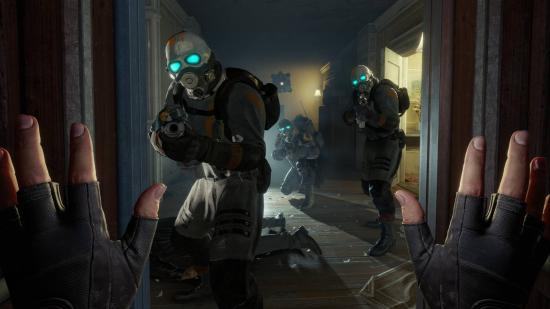


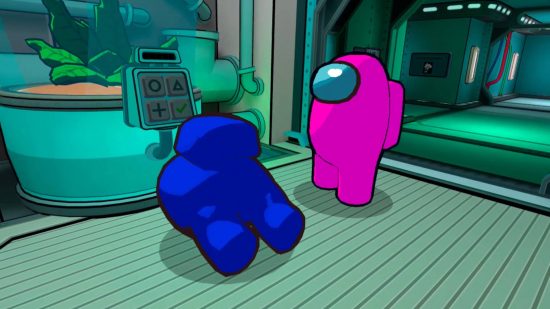

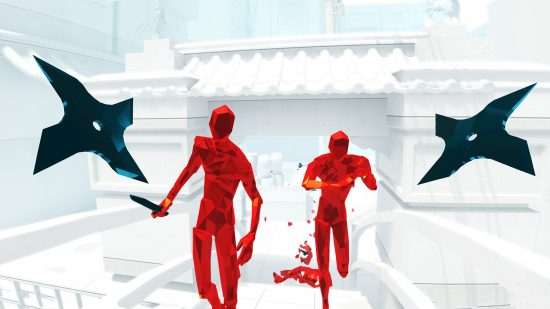
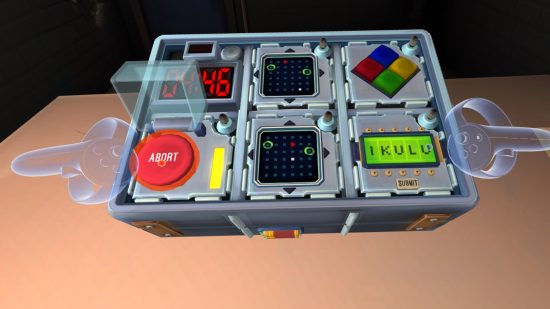
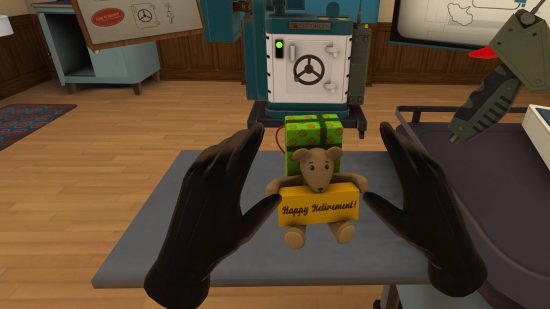
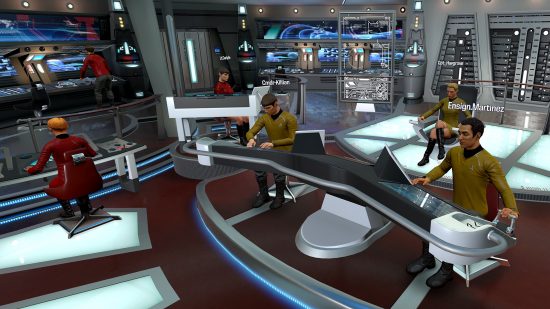

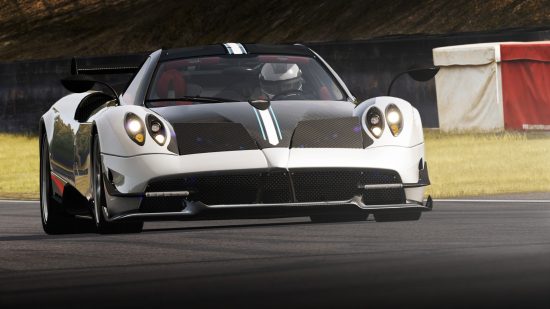
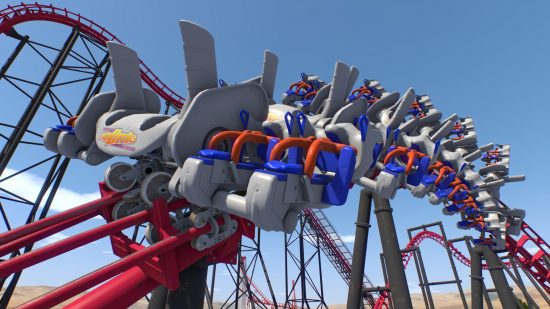
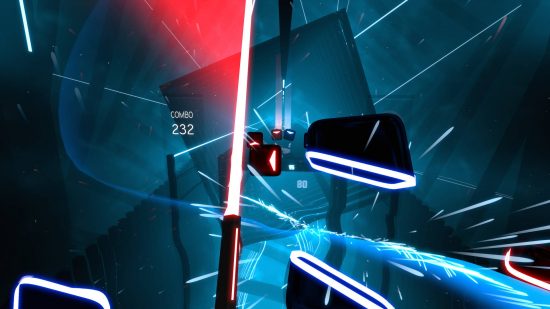
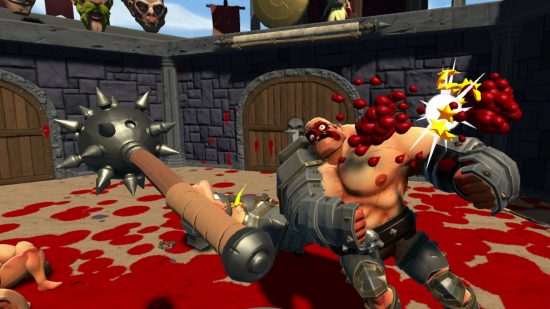
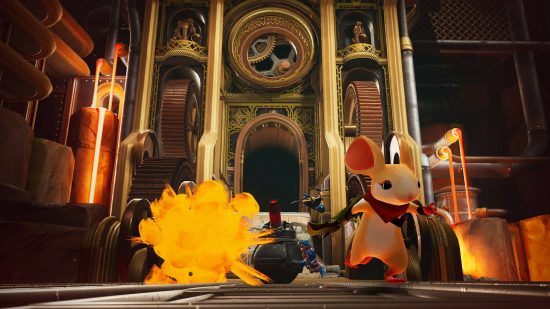


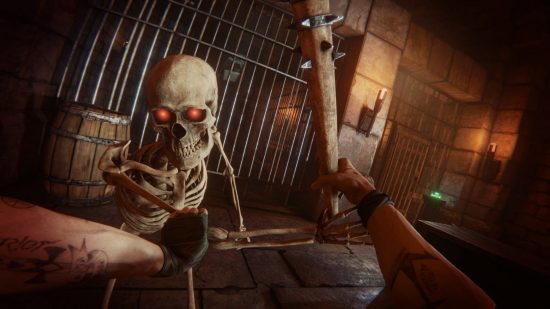
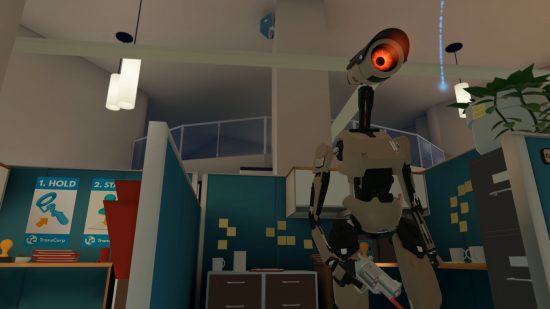
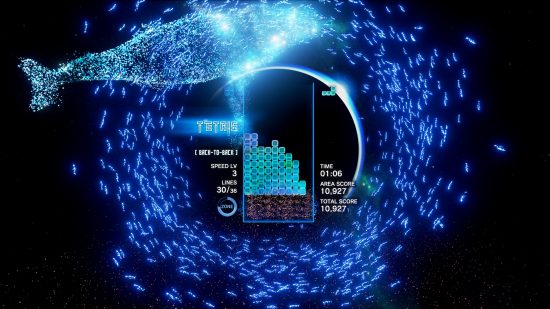
No comments:
Post a Comment